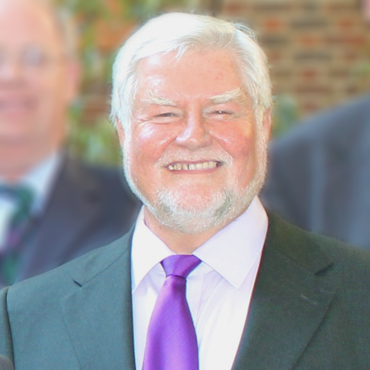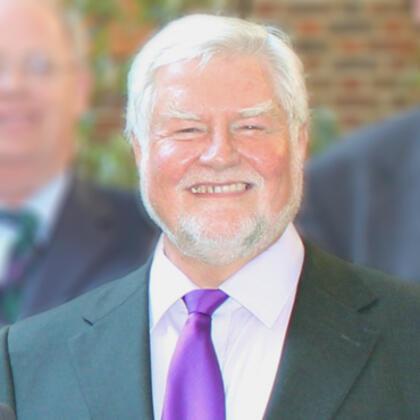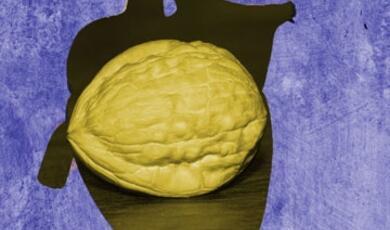The Psychology of Performing Arts: The power of music
Share
- Details
- Text
- Audio
- Downloads
- Extra Reading
How does music exert such extraordinary effects on our emotions? To what extent does it depend upon our nature (biological rhythms, instinctive reactions to certain sound patterns) and to what extent experience (e.g. conditioned associations, nostalgia)? Particular attention is given to the tension-reduction and optimal uncertainty theories of musical enjoyment. We will also consider whether there is any truth in the claim that listening to music can increase intelligence in the listener (the so-called 'Mozart Effect').
Download Text
THE PSYCHOLOGY OF PERFORMING ARTS: THE POWER OF MUSIC
Dr Glenn Wilson
According to Sir Thomas Beecham, 'most people appreciate music - they may not understand it, but they like the noise it makes'. This talk is aimed at adding a little understanding to whatever appreciation is already available.
Music plays a central role in the lives of most people. It is the most frequently declared leisure interest and a primary value, up with familyand sex and,on average, ranking above religion, sport and travel. Much time is spent listening to music, especially among younger people; a quarter of students report listening more than five hours per day. Asking people to list the music closest to their hearts (the 'Desert Island Discs' exercise) reveals much about their self-identity; music seems to mark the life events that define people's view of themselves. So integral to personality is musical taste that items concerning it appear in standard tests of partner compatibility (e.g., Wilson and Cousins, 2003). Why is music so important, and by what mechanism does it have such an impact upon our emotions?
First, we consider some of the research findings relating to the power of music. Work in Helsinki shows that stroke recovery is enhanced by listening to music. Verbal memory is improved 60%, as against 18% for audio books, and patients become less confused and depressed with exposure to music (Sarkamo, 2008). Other work shows that music calms and revives happy memories in Alzheimer's patients, reduces stress and bolsters the immune system in general hospital patients, and assists with pain management in dentistry and hospices. Classical music played in wine stores is associated with the purchase of classier, more expensive wines compared with pop music, which sells more plonk. Classical music also reduces vandalism at railway stations, although the reason is not clear; either it 'soothes the savage beast' or it drives away the vandals because they can't stand it. Pop music also has its uses: a University of Illinois study found that the ideal rhythm for jump-starting the human heart is the Bee Gees' 'Stayin' alive' (108 bpm), which provides a useful guide for resuscitators both amateur and professional. Music can be motivating: driving soldiers into battle, emptying a theatre more quickly after the curtain, increasing productivity in factories, pacing the speech production of stammerers, and helping Parkinson's patients to walk when movement is otherwise frozen.
A striking physiological effect of music is the 'shiver down the spine' or 'thrill'. Goldstein (1980) defined a 'thrill' as 'a slight shudder, chill or tingling sensation, usually localised at the back of the neck and fleeting'. It may migrate over the scalp and down the spine and is often accompanied by gooseflesh. Goldstein noted that stimuli which elicit thrills had in common 'a confrontation with something of extraordinary beauty or profound and moving significance'. Music topped the list of thrill-invokers, being cited by 96% of survey respondents. Goldstein went on to show that music-evoked thrills were blocked by the opiate antagonistnaloxone, implying that endorphins are involved - hence musical pleasure is in a sense equivalent to the effects of euphoriant drugs. According to David Huron of Ohio State University, musical 'frissons' (as he called them) occur when the frontal cortex damps down an amygdaloidal fear response triggered by some aspect of the music (e.g. surprise, crescendo, scream-like sound). This would suggest that musical pleasure comes from dicing with danger within a safe context. Huron found individual differences in frisson responding, women experiencing them more often than men and less adventurous people being more susceptible than sensation-seekers.
A number of theories concerning the origins of music have been proposed:
(1) Darwin believed that song evolved as a courtship display - a kind of 'auditory peacock's tail'. This idea is supported by the fact that in some birds only the male sings, although the neural circuitry is available in females because they wax lyrical if injected with the male hormone testosterone. However, the sexual selection theory of singing is less applicable at the primate level and humans use music for many purposes besides attracting a mate.
(2) The 'social Darwinist' Herbert Spencer proposed that singing arises out of emotional speech. He observed that when we are excited the pitch of our voice rises, intervals are more marked and regular, and words are stretched. Such emotional magnification might contribute to the impact of music.
(3) Anthropologist Karl Stumpf regarded long-distance communication as the key to music. When calling over a distance, the voice is raised in intensity and pitch, and tone becomes sustained and stabilised. Opera is certainly geared to projecting drama in a large auditorium, but other forms of singing, like crooning, are still recognisably musical. The use of drums as a 'bush telegraph' supports the Stumpf view, though in this context, rhythm is more important than pitch.
(4) Nadel (1971), having reviewed and criticised the above theories, stresses the ritual origins of music. Music, he maintains, is a special, mystical language for connecting with the spirit world. It speaks in a supernatural voice and has power to intoxicate and create ecstasy. If the key to music is its 'out of the ordinary' nature this would explain why many prefer to hear opera in foreign languages they do not understand.
All of these theories probably contribute to an understanding of musical experience as parts of a jigsaw. One thing they seem to agree on is that music derives from primitive song, with instruments being an extension of our vocal apparatus.
Consistent with the courtship origins of music is the finding that music affects women more than men. For example, finger temperature (a physiological indicator of arousal) decreases to music, but for women more so than men. The EEG (brain wave) response to sad music is greater than for happy music, and again the differential is greater for women. Music-induced moods affect women's memory more than that of men and women are more responsive to the therapeutic effects of music. Girls identify the mood of music (choosing appropriate schematic faces) better than boys. Women (not men) judge music they dislike as louder than preferred music at same volume. More men than women are 'tone-deaf' and musical 'frissons' are seven times more common in women. All these findings suggest that women are more responsive to music than men. However, this responsiveness may not be specific to music. Women are more sensitive to sound in general than men (finding loud noises more aversive) and are also more empathic and emotionally reactive across the board.
Music is both a biological and a cultural phenomenon. Physiological rhythms can be paced by music (lullabies produce slow breathing, acceleration increases heart beat, and repetition can induce trance). Syncopation seems to be exciting because it suggests a missed heart beat or snatched breath. Many features of music are universal across cultures - the use of the pentatonic scale, harmonics and cross-cultural similarities in the form of melodies adopted for particular purposes (war, mourning, love songs, etc) are revealed by sound spectrograph analysis. However, cultural learning is also involved in the appreciation of music. Music involves a structure or 'grammar' that is acquired through experience and hence takes different forms in different parts of the world. The differences may have important cultural significance; songs are used for the consolidation of group identity (e.g. folk music and anthems) and for historical record-keeping in tribal society. Sagas set to music are easier to remember and hence better passed down the generations.
Music is evocative at several different levels. At the most basic, biological level it presents supernormal stimuli - simplified, exaggerated versions of natural sounds. It engages our emotions by imitating sounds ofinstinctive significance(birdsongs, babbling brooks, approaching footsteps, animal roars, cries of anguish, thunder, etc.) Innate brain cells/circuits are geared to respond to auditory stimuli that have relevance to survival, whether comforting or threatening. Secondly, we are affected by metaphorical associations, called analogies. These usually take the form of visual images and comparisons, e.g., love duets that 'soar into the sky', patriotic marches that are 'noble and uplifting', joyful pieces that are 'young and sprightly'. Such 'shape' aspects of music largely involve the right side of the brain and may be retained by left hemisphere stroke victims when verbal facility has been lost. Finally, there are conditioned associations - connections between musical segments and things happening at the time (c.f., nostalgia, leitmotifs). These begin early in life, perhaps even prenatally.
Musical structure centres on tonality. We make sense out of a piece by identifying a 'key' note (the tonic) around which the tune and harmonies revolve, and without which it could not end satisfactorily. In Western music, the fifth note in the 8-note scale (the dominant) also has tension-reducing properties, being perceived as a partial resting place in the scale. Note 7/8 (the leading note) is the most tension producing, crying out as it does for 'resolution' by the tonic. The scale is prototypic of musical structure, setting up tensions that we gain pleasure from having relieved. Enjoyment is greater with delayed gratification; appoggiaturas, turns, trills and deceptive cadences are among the many teasing devices that musical pleasure depends on.
Common melodic patterns support this completion theory of musical enjoyment. A tune departs from, and then returns, to the 'safe base' of the tonic. In the film Roger Rabbit, cartoon characters, called 'toons', are identifiable because they cannot resist the urge to complete the classic phrase 'yom, tiddley om pom - pom pom'. This is archetypical because it consists of the progression: tonic>dominant>dominant>leading note>tonic. It sets up tension by establishing the key very firmly, and ending (as the scale does) with the leading (7th note) followed by the satisfying tonic.
Other typical melodic forms have been described by Rosner and Meyer (1982):
(1) Gap-fill melodies start with a large jump in pitch, followed by sequence of closer intervals that 'fill the gap' (e.g. 'Somewhere over the Rainbow').
(2) Changing-note melodies show a pattern of tonic>leading note>2nd note>tonic (C, B, D, C) (e.g., 'Mademoiselle from Armentieres'). There are several variants, but they are always harmonised by the chord progression of tonic>dominant; dominant>tonic. This structure is not always obvious because of hierarchical elaboration, but it can be identified by reductive analysis of many complex sequences by celebrated composers. At a broader level, the form of the sonata also illustrates the creation and dispelling of tension (exposition>development>recapitulation/coda).
Another important aspect of Western music is harmony. Pairs of tones vary on a scale of dissonance vs consonance. The most dissonant pure tones are those that are close but discriminable (just less than a semi-tone); those that are widely spaced clash less. Instruments and voices produce complex tones (containing overtones in addition to thefundamental). When the frequency ratio between two notes is mathematically simple the overtones blend better. The simplest ratio is the octave (1:2), which is consonant in all cultures. Others that blend fairly well are: the fifth (2:3), fourth (3:4), sixth (3:5), major third (4:5) and minor third (5:6). Less harmonious are the semitone (any pair of notes adjacent on a keyboard) and the tritone (six semitones apart). Both of these require double figure ratios to describe. The tritone was dubbeddiabolus in musica by medieval church musicians, and was generally avoided, though it is reasonably well tolerated today, providing resolution is forthcoming not too long afterwards. The history of musical taste seems to be that of increasing the amount of dissonance that is built up prior to resolution (yielding progressively greater thrills) and this depends upon cultural learning. Each major composer assumes familiarity with the conventions of those that preceded them before pushing the boat a little further out.
Keys are related according to the number of notes held in common. New scales created by beginning with the top half of a previous scale (starting from the dominant) need added sharps, while those ending with the bottom half require extra flats. Keys can be shunted only six times in each direction before there is convergence (thus forming a closed key circle). The belief that certain keys naturally evoke particular emotions is not well-founded (except for major vs minor modes, where it is accepted that minor keys sound murkier and more 'troubled'). Composers did use certain keys for certain purposes (pastoral, military, etc.) but key qualities cannot be inherent because today's standard A (440Hz) is more than a semitone higher than it was in 1820.
However, relative keys do have impact. Most obviously, shifting key upward within a piece (a trick frequently used by songwriters such as Andrew Lloyd Weber) creates extra tension. Some composers (e.g., Gluck, Weber, Wagner) coded keys to represent certain emotions in a consistent way (e.g., C = salvation, G = love, D = passion, A = anxiety, E = loss.) Emotions could then be mixed out of keys, like orange is mixed out of yellow and red. In the above example, passion seems well-placed between love and anxiety, containing as it does components of each adjacent emotion, and anxiety slots nicely between passion and loss. In analyses of great operas like Tristan and Isolde, musicologist John Drummond (1980) was able to reveal an underlying structure of key relationships that almost certainly adds to their evocative power, whether or not the listener, or even the composer, is aware.
Music generates expectations that are sometimes violated. Total predictability is dull, while too little is disturbing. Musical pleasure is gained when the brain is actively engaged in seeking structure but is not overtaxed. Optimal uncertainty theory explains why enjoyment increases with familiarity up to a point, then declines It explains why complex compositions can be heard more often than simple ones before over-familiarity occurs. It also accounts for the fact music gets more complex through history, later composers breaking rules established earlier. With twelve-tone music we may have reached the limits of complexity within the Western system, but who know what will be invented next.
Optimal uncertainly theory also explains individual preferences - younger people, sensation-seekers, and high IQ people are usually able to tolerate greater complexity. It also accounts for the way in which we use music toadjust our information load, e.g., tuning the car radio to stimulating music when we are bored, perhaps on a long stretch of motorway, or to placid music (or even turning it off) when we are stressed by too many traffic events.
Finally, on the topic of brain/music connections, we consider a widely reported finding from studies in the 1990s that listening to Mozart increases performance on spatial reasoning tests. Since then, several replications have failed and questions have arisen. Does it have to be Mozart? Does it have to be classical? Does the listener have to enjoy it? None of these questions has really been answered, but in the meantime other interesting results have been reported:
(1) Epileptics have less severe seizures with Mozart than with pop music or silence.
(2) MRI scans show that the cerebral cortex is more widely activated by Mozart than pop music, or even Beethoven.
(3) Long-term science learning of hyperactive children is improved with classical music in the background - apparently due to lowering of stress levels.
(4) Early keyboard training seems to enhance creativity and IQ, perhaps by helping to build neural networks that are later used for problem solving.
Whether or not there is any truth in the original Mozart Effect, music (especially classical music) does seem to have the capacity to lend structure to developing or scrambled brains, and this is just one of its many impressive powers.
Bibliography
Drummond, J.D. Opera in Perspective. University of Minnesota Press.
Huron, D. (2008) Music-evoked frissons. International Symposium on Music and the Brain, Stanford University.
Sarkamo,T. et al. (2008) Music listening enhances cognitive recovery and mood after middle cerebral artery stroke. Brain, 131, 866-876.
Wilson, G.D. (2002) Psychology for Performing Artists (Second Edition). Whurr, London (now part of John Wiley). (The majority of other references are to be found within this.)
Wilson, G.D. & Cousins, J.C. (2003) Partner similarity and relationship satisfaction: Development of a compatibility quotient. Sexual and Relationship Similarity, 18,161-169.
© Dr Glenn Wilson, Gresham College, 17 March 2009
This event was on Tue, 17 Mar 2009
Support Gresham
Gresham College has offered an outstanding education to the public free of charge for over 400 years. Today, Gresham College plays an important role in fostering a love of learning and a greater understanding of ourselves and the world around us. Your donation will help to widen our reach and to broaden our audience, allowing more people to benefit from a high-quality education from some of the brightest minds.


 Login
Login






